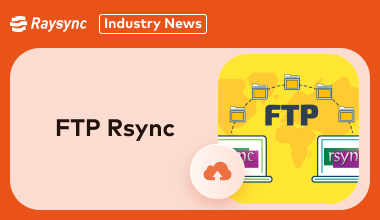Everything about IBM Aspera High Speed Transfer Server
July 2, 2024IBM Aspera High-Speed Transfer Server revolutionizes data transfer by leveraging its patented Fast Adaptive Secure Protocol (FASP). Designed to overcome the limitations of traditional transfer methods like FTP and HTTP, Aspera enables the rapid, secure, and reliable movement of large files and datasets across global networks.
This comprehensive guide covers everything you need to know about IBM Aspera High-Speed Transfer Server, from its core technology and key features to practical usage scenarios and performance comparisons.

What Is IBM Aspera High Speed Transfer Server
IBM Aspera High Speed Transfer Server is a software standard developed by IBM to facilitate the rapid and secure transfer of large files and vast data sets across wide area networks (WANs).
This technology is particularly valuable for organizations that require efficient, reliable, and secure data transfers, especially over long distances or under challenging network conditions.
Features of IBM Aspera High Speed Transfer Server
IBM Aspera High Speed Transfer Server offers several key features designed to enhance data transfer efficiency and security. These include:
- FASP Technology: The core of Aspera's high-speed transfer capability is FASP, which optimizes the use of available network bandwidth and overcomes the limitations of traditional file transfer protocols like FTP, HTTP, and SCP. It achieves high-speed transfers regardless of file size, transfer distance, or network conditions.
- Security: Aspera provides end-to-end security for data in transit and at rest. It includes features like AES-256 encryption, integrity verification, and user authentication to ensure that data is protected throughout the transfer process.
- Scalability: The server is designed to handle the transfer needs of both small organizations and large enterprises. It supports transferring files of any size and can scale to accommodate increasing data transfer volumes.
- Reliability: Aspera ensures reliable transfers with automatic retry and resume capabilities. This means that if a transfer is interrupted for any reason, it can be resumed from the point of interruption without data loss.
- User Management and Access Control: The server includes robust user management features, allowing administrators to control access to files and transfer capabilities on a per-user or per-group basis.
- Integration and APIs: Aspera High-Speed Transfer Server can be integrated with other systems and workflows through its comprehensive set of APIs. This allows for seamless integration with existing IT infrastructure and automation of transfer processes.
Usage Scenario of IBM Aspera High Speed Transfer Server
IBM Aspera High-Speed Transfer Server is utilized in various industries to address challenges related to transferring large volumes of data efficiently and securely. Below are some common usage scenarios that highlight its capabilities and benefits:
- Media and Entertainment: In the media and entertainment industry, video production and distribution are critical processes that often involve transferring large video files between production sites, editors, and broadcasters.
- Healthcare and Life Sciences: In healthcare and life sciences, the transfer of large genomic datasets for analysis and collaboration is essential. Research institutions and healthcare providers rely on Aspera to transfer these sensitive datasets quickly and securely, enabling timely research and discoveries.
- Technology and Software Development: Tech companies frequently need to distribute software updates, patches, and new releases to users and customers globally. Aspera accelerates these transfers, ensuring updates are delivered promptly, which reduces downtime and enhances user experience.
- Financial Services: Financial institutions deal with vast amounts of transactional data that need to be transferred between various branches, data centers, and analytics platforms. Aspera ensures these big data transfers are completed quickly and safely, enabling timely data analysis and decision-making.
- Government and Public Sector: Government agencies often need to share large datasets, such as census data, satellite imagery, and public records, with other agencies and organizations. Aspera facilitates these inter-agency data sharing activities, ensuring data is shared quickly and securely.
- Education and Research: In education and research, universities and research institutions collaborate on projects that involve large datasets, such as climate data, scientific simulations, and various research activities.
Raysync High-speed Transfer Protocol VS. IBM Aspera FASP
When it comes to high-speed data transfer solutions, both Raysync and IBM Aspera offer robust protocols designed to optimize the transfer of large files and datasets across various network conditions. Below is a comparative analysis of Raysync High-speed Transfer Protocol and IBM Aspera FASP.

Technology Overview
Raysync High-speed Transfer Protocol:
- Transmission Efficiency: Raysync uses a proprietary protocol designed to maximize bandwidth utilization and minimize transfer times.
- Security: It incorporates AES-256 encryption to ensure data security during transfers.
- Reliability: Raysync supports resumable transfers, ensuring data integrity even if the transfer is interrupted.
- Compatibility: It supports various operating systems and can be integrated with existing IT infrastructures.
IBM Aspera FASP (Fast Adaptive Secure Protocol):
- Transmission Efficiency: Aspera’s FASP optimizes data transfer speeds by fully utilizing available bandwidth and overcoming traditional TCP/IP limitations.
- Security: FASP employs AES-256 encryption, integrity verification, and user authentication to protect data during transit.
- Reliability: Aspera supports automatic retry and resume functionalities to maintain data integrity during transfer interruptions.
- Compatibility: Aspera FASP is compatible with multiple platforms and can be integrated into various workflows using its APIs.
Performance and Speed
- Bandwidth Utilization: Both Raysync and Aspera excel in maximizing bandwidth utilization, but Aspera's patented FASP technology is renowned for its ability to fully exploit available bandwidth, even in high-latency and packet-loss conditions.
- Transfer Speed: While both protocols significantly outperform traditional FTP, Aspera FASP often demonstrates superior speed due to its advanced congestion control and error recovery mechanisms.
- Latency and Packet Loss: Aspera FASP is specifically designed to handle high-latency and packet-loss environments efficiently, making it ideal for global data transfers.
Security Features
- Encryption: Both protocols use AES-256 encryption to ensure the security of data during transfer.
- Integrity Verification: Aspera FASP includes robust integrity verification to ensure data is not corrupted during transit. Raysync also provides integrity checks to maintain data fidelity.
Integration and Usability
- Ease of Integration: Both Raysync and Aspera offer APIs and SDKs for integration into existing systems. Aspera has a comprehensive set of APIs for a wide range of applications, enhancing its flexibility.
- User Management: Aspera includes advanced user management features, allowing for granular control over user access and transfer permissions. Raysync also provides user management capabilities, although the specifics can vary.
FAQs about IBM Aspera High-Speed Transfer Server
There are FAQs about IBM Aspera available. Check them to see if your question is already addressed.
Q1: Is Aspera faster than FTP
Yes, IBM Aspera is significantly faster than FTP. Aspera's FASP protocol is designed to maximize bandwidth utilization and overcome the limitations of traditional TCP/IP-based protocols like FTP. This results in much higher transfer speeds, even over long distances and networks with high latency and packet loss.
Q2: What is IBM Aspera transfer speed
While IBM Aspera excels at maximizing available bandwidth during file transfers, the actual speed can be influenced by several factors. These factors include:
- Available network bandwidth: This is the fundamental limitation on transfer speed. Aspera can't exceed the physical capacity of your network connection.
- Network conditions: Factors like latency, congestion, and packet loss can impact transfer speeds, even with ample bandwidth.
- Aspera server and client configuration: Specific settings on both the server and client software can affect performance. Optimizing these settings can improve transfer speeds.
Q3: What is the upload speed for Aspera
The upload speed for Aspera is highly optimized and can reach the maximum available bandwidth of your network. Aspera's FASP protocol is designed to fully utilize the available network capacity, allowing for extremely fast upload speeds, often limited only by the network's physical bandwidth.
Final Words
IBM Aspera High-Speed Transfer Server empowers you to conquer data transfer challenges. With unparalleled speed, security, and reliability, Aspera breaks through the limitations of traditional methods, ensuring your critical data reaches its destination quickly and securely. Moreover, Raysync is also a good alternative for IBM Aspera because of its affordable pricing model.
You might also like

Industry news
June 14, 2024Learn all about enterprise file sync and share EFSS solutions and discover the top EFSS options, their features, pricing, and user feedback to choose the best fit for your enterprise needs.

Industry news
February 14, 2025New to FTP Rsync? This beginner-friendly guide simplifies the process of setting up Rsync over FTP. Efficient file transfers are within reach – learn how here!

Industry news
August 2, 2024In this blog we will discover the top 6 solutions for secure cloud based file sharing and learn about their features, pros and cons, and free trial policies.